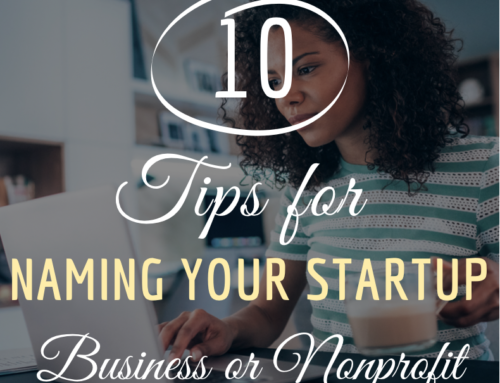15 Informative Steps to Start Your Nonprofit in 2021

My Experience
Throughout my thirteen-plus years of working in executive leadership roles in the nonprofit sector with youth development organizations including Girl Scouts (GSUSA), Boys & Girls Clubs of America, and other educational institutions; I could not deny the ambitious, creative drive of the entrepreneur within me.
I remember the frustration of wanting more. I wanted to make a difference beyond what I was accustomed to at the present time. Because just like you, I knew that there was more for me to accomplish. So, I launched out and started my own business ventures. One of my ambitions today is to help you start your nonprofit. So, let’s get started!
What Defines a Nonprofit?
The following outlines some key aspects of a nonprofit organization and its characterization:
- A nonprofit conducts business for the benefit of the general public and is established to deliver a particular social cause or advocate for a shared point of view.
- The initial organizers of a nonprofit are recognized as founders, not owners. The founder is not allowed to make a profit or benefit from the net earnings of the nonprofit organization. However, they may receive compensation as an employee.
- A nonprofit may operate in religious, scientific, research, or educational settings and are accountable to the donors, funders, volunteers, program recipients, and the public community.
- There are various categories of nonprofits recognized by the Internal Revenue Service (IRS). Click this link to review the different categories and types of tax-exempt organizations.
- A nonprofit generates its income from various funding sources. The most common fundraising methods used include the following: attracting individual support and donations; soliciting gifts from major donors; holding a capital campaign, and promoting legacy gifts or planned giving.
- A nonprofit uses its income to achieve its mission and overall objective and may acquire tax exemption under the Internal Revenue Code section 501 (c) (3).
Now that we have reviewed what defines a nonprofit organization, the following are fifteen key steps to help you start your nonprofit.
Develop the Mission
It is important that you develop your mission statement in the beginning as you will have need of it from everything including preparing applications to planning your fundraising activities. The Ultimate Journal Planner for Starting Your Nonprofit Organization has a mission statement template that will help you develop your mission within minutes.
Create the Name
Selecting a name that represents your organization is important and involves more than just creating something memorable or appealing. It should reflect a snapshot of the organization’s identity, purpose, and goals.
Write the Vision
How do you imagine your non-profit operating and what does it look like? The Ultimate Journal Planner for Starting Your Nonprofit Organization has a template to help you brainstorm and organize your thoughts to develop what I like to call a vision “word” board.
Establish the Organization’s Goals and Objectives
Successful organizations establish written goals with objectives that are implemented and reviewed on a regular basis. In general, goals describe the future expected outcomes and provide programmatic direction. The goals of a nonprofit combine the concepts of the mission and vision to further establish what the organization seeks to accomplish. Therefore, goals may be viewed as higher-level concepts that will be used to reach the mission. Objectives are clear, measurable statements of action that are implemented to achieve a goal. Objectives should be an extension of your goals, giving more specific details on how the nonprofit will achieve its goals. You cannot develop objectives without first clearly defining the goals.
Draft the Company Description
The company description provides a review of the different elements of your organization. It may be used on your website, in grant applications, print materials, and other resources to help readers and potential investors quickly understand the work of the organization.
Develop Your Board of Directors
The board of directors serves as the governing body of a nonprofit organization and it is required in order to develop a strong organizational structure. The people who volunteer to serve on the board are responsible for overseeing the organization’s overall activities. Consider choosing individuals who are both passionate about your cause and are influential in your community.
Complete State, Local, and Federal Filings
There are many documents, applications, etc. that will need to be filed on the state, local, and federal levels to start your nonprofit. Some filings will also be required on an annual basis. The Ultimate Journal Planner for Starting Your Nonprofit Organization has a complete listing of the required filings with a checklist to help you find what you determine the individual needs of your organization.
Create a Financial Plan
A financial plan for a nonprofit organization includes details about where you plan to get money, how you will get it, where you plan to spend it, and the amounts. The answers to those questions are found in the budget and it serves as a guide for all of the financial activity of the organization. Creating and approving an annual budget is one of the fundamentals of planning and managing the organization’s finances.
Organize Future Mailings
In the beginning stages of setting up your nonprofit, you will find the need to have a designated address to receive mailings. It will also prove to be needed when completing federal, state, or local filings, registering your domain name for your website, and more. Therefore, I strongly recommend that you select an address (preferably a PO Box) that you can use specifically for your nonprofit.
Retain an Accountant and an Attorney
As with starting and managing any business, you will need to have a professional team available to handle financial and legal affairs. Therefore, you will need to retain an accountant and an attorney. This does not have to be done immediately. However, you will find it necessary at some point in launching your nonprofit. You will need to decide on a legal structure to choose whether your organization will be a trust, corporation, or association. You may need to consult an attorney to provide assistance in making the best decision.
Research Your Field of Interest
In starting any nonprofit, you will want to get an understanding of the particular division of the nonprofit industry that you plan to work with. The following divisions or fields of interest make up the nonprofit industry:
- Health Services
- Education
- Social and Legal Services
- Civic and Environmental Advocacy
- International Relations and Development
- Arts and Culture
Outline Your Products, Services, and Programs
Creating an outline of your potential products, services, and programs proves vital in equipping you with the ability to effectively share with others what the organization has to offer. When developing descriptions for your products, services, and programs, briefly explain what they are and how they will be used. Note the benefits, advantages, and needs that will be met.
Create Your Plan of Operations
The operating plan describes the structure of the organization. And, it details how you will actually carry out everything that you have outlined in your vision.
Organize Human Resources and Risk Management
Your human resources and risk management plan is a component of your overall operational plan. It should provide details about staff functions, job descriptions, human resource policies, recruitment, training, etc.
Develop Your Marketing Plan
Your marketing plan should answer these questions: Whom are you trying to reach and how do you plan to reach them? What are the current trends in your market/industry? What need(s) will your services address? What other organizations are competitors or potential collaborators?
Questions to Consider
What are your thoughts? Please share your answers to the following two questions in the comments section below. Thanks!
1- How do you plan to use the information from this blog post?
2- What additional questions or informational tips would be helpful to you for starting your nonprofit organization?
Next Steps
To learn more details about these 15 steps along with journaling activities and much more, grab your copy of the Ultimate Journal Planner for Starting Your Nonprofit Organization.





Leave A Comment